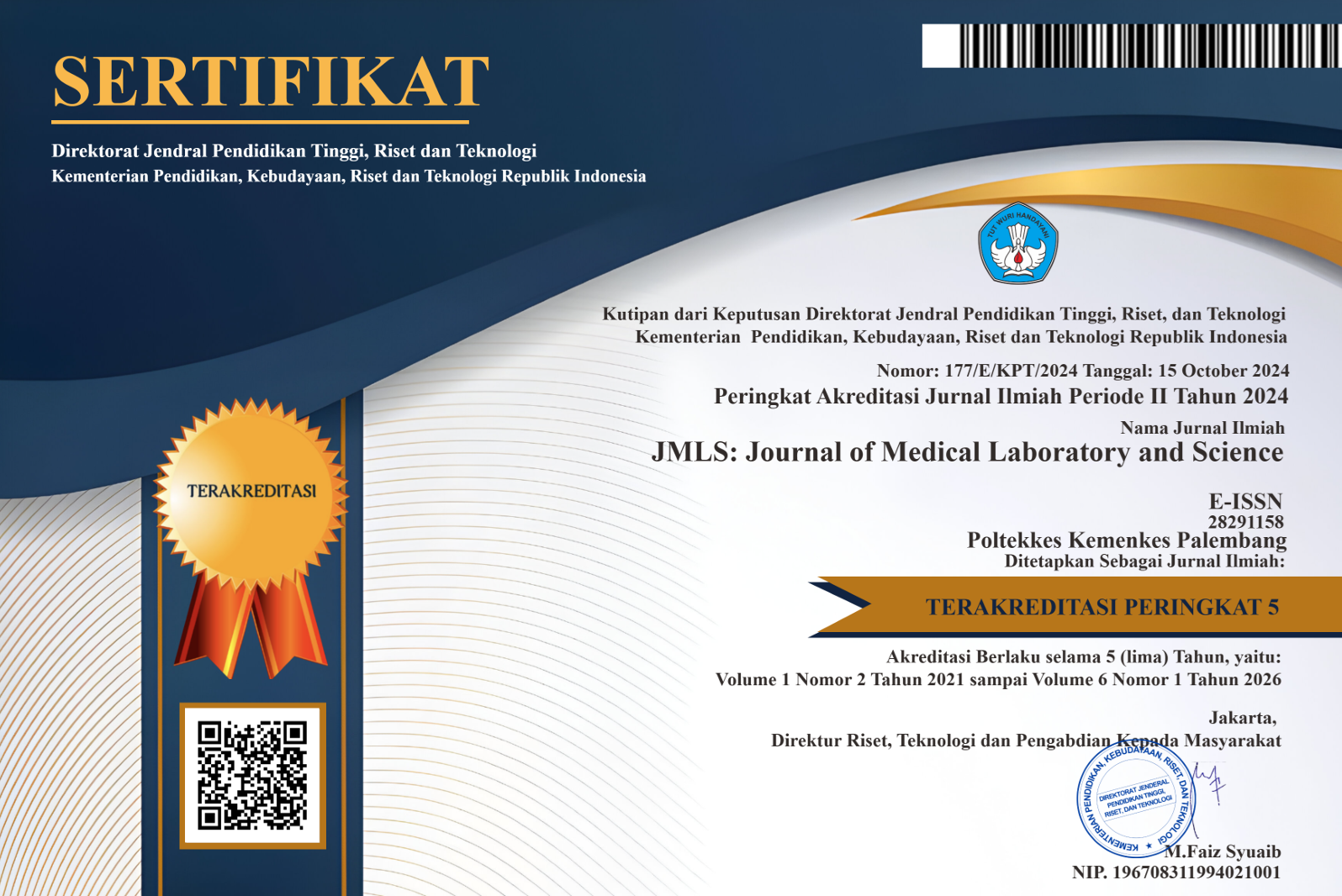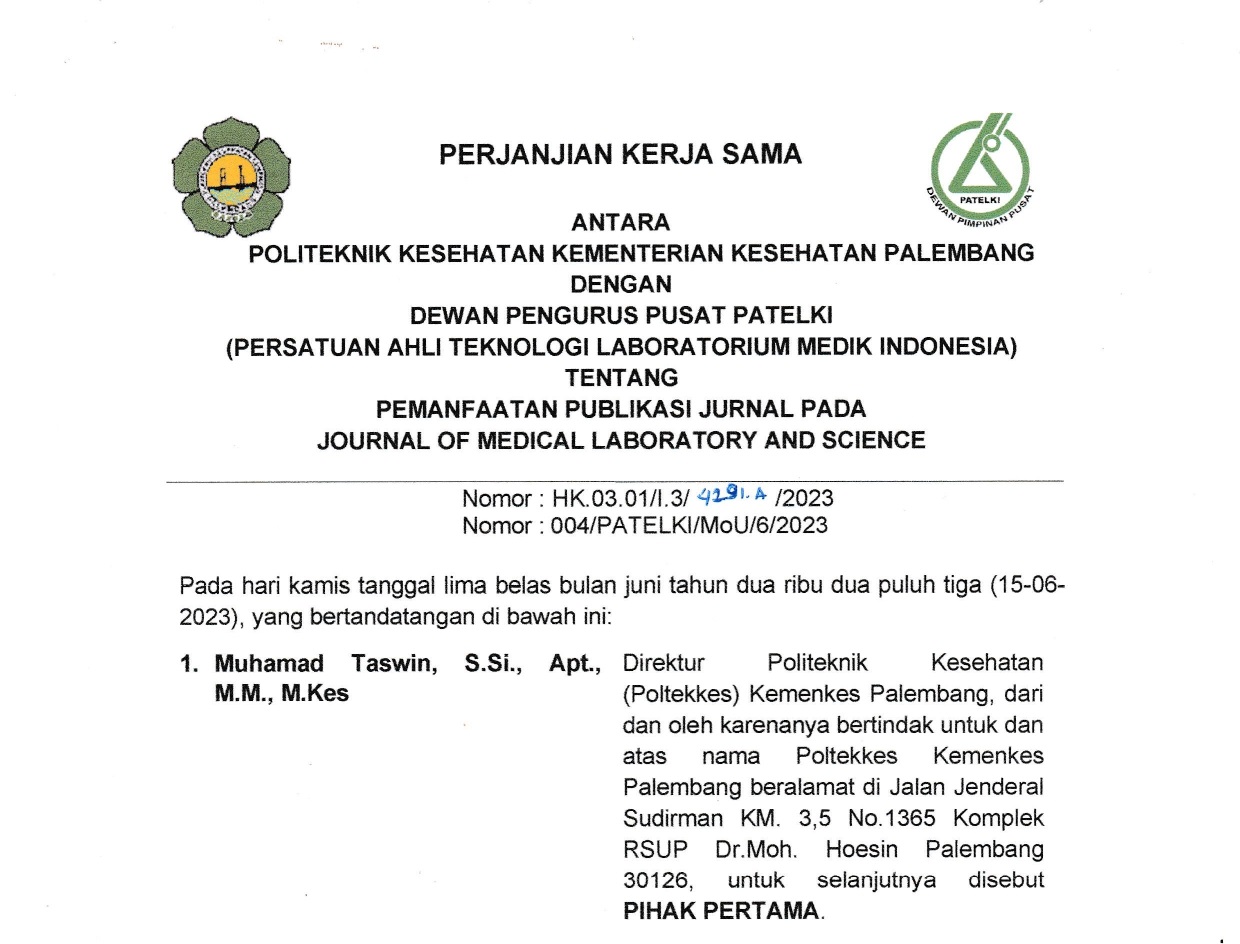ANALISIS HASIL PEMERIKSAAN SARS-CoV-2 METODE RT-PCR di LABORATORIUM DAN RUMAH SAKIT RUJUKAN PALEMBANG
Abstract
Background: The spread of Corona Virus Disease-19 (COVID-19) caused by the SARS-CoV-2 coronavirus in the world is increasing so rapidly leads to the World Health Organization (WHO) announced the condition as a pandemic. The recommended test for SARS-CoV-2 is real-time reverse-transcription polymerase chain reaction (PRC), a method with high sensitivity and specificity. The outcome of the assay is the cycle threshold (Ct) value of the sample compared with a reference Ct value. However, there has been no standardization to determine threshold (Cycle threshold), the cycle number at which the fluorescence generated within a reaction crosses the fluorescence threshold, a fluorescent signal significantly above the background fluorescence, on different hosts. Each manufacturer of this method's reagent kit may vary at the threshold value so that the interpretation becomes subjective only to the kit's used. By considering that not all SARS-CoV-2 testing laboratories use the same reagent kit, we would like to study the Ct value of SARS-CoV-2 assay Methods: This research is an analytical descriptive study with a secondary data analysis approach. The data collected was the Cycle threshold (Ct) value of SARS-CoV-2 assay with RT-PCR method from Health Laboratory Center of Palembang (BBLK), PUSRI Hospital and Siti Fatimah Hospital. Results: during September-November 2020 there were 6,366 SARS-CoV-2 positive samples from 50,950 samples (12.49%); the RT-PCR type were multiplex techniques with two target genes, a combination of RdRP and N, RdRP and E, RdRP and ORF1ab. The average of Cycle threshold (Ct) value from positive test results for the target genes ORF1ab, RdRP, N and E were: 30.33; 28.44; 28.90 and 27.84 respectively . Keywords : Test result analysis, RT-PCR, SARS-CoV-2
Copyright (c) 2022 Journal of Medical Laboratory and Science

This work is licensed under a Creative Commons Attribution-ShareAlike 4.0 International License.
Authors who publish with this journal agree to the following terms:
- Authors retain copyright and grant the journal right of first publication with the work simultaneously licensed under a Creative Commons Attribution License that allows others to share the work with an acknowledgement of the work's authorship and initial publication in this journal.
- Authors are able to enter into separate, additional contractual arrangements for the non-exclusive distribution of the journal's published version of the work (e.g., post it to an institutional repository or publish it in a book), with an acknowledgement of its initial publication in this journal.
- Authors are permitted and encouraged to post their work online (e.g., in institutional repositories or on their website) prior to and during the submission process, as it can lead to productive exchanges, as well as earlier and greater citation of published work














